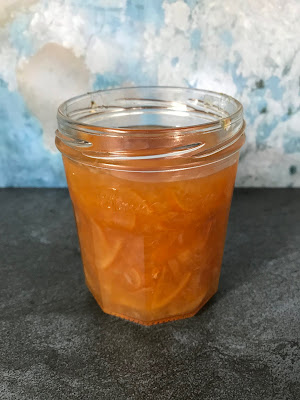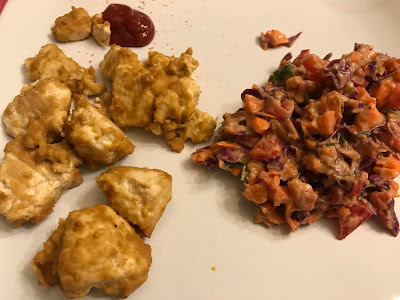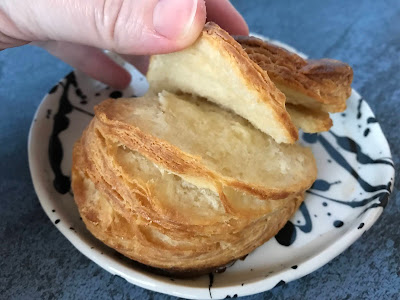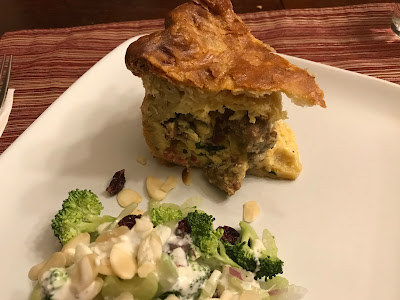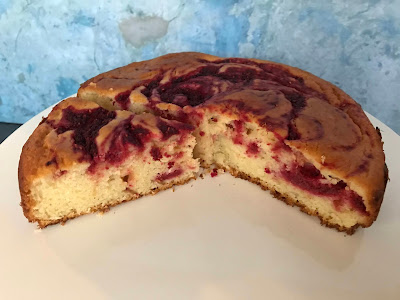Friday, February 26, 2021
Meyer Lemon Marmalade
Saturday, February 20, 2021
Marzipan and Orange Blossom Morning Buns
I meant to post more last week, but my heart wasn’t in it. We’ve been hit with some very cold (for Texas) weather and were without water for a few days, so I had other things on my mind. We were lucky to have electricity, and now water is back, albeit with a boil advisory. Hundreds of thousands of people in Texas are not so lucky. The Little Prince’s school might also be closed a while longer, as it seems to have sustained the most damage in the district. But I want to get back to normal, were it only so I feel like I’ve done one thing today, and I figured that the weekend is a good time for a breakfast bun recipe.
Wednesday, February 17, 2021
Salade-repas au porc et aux canneberges
Tofu magique
Monday, February 15, 2021
Cheater Cassoulet
Friday, February 12, 2021
Buttermilk Biscuits
I ended up making two different kinds of buttermilk biscuits recently. First, I tried the ones in Jessica Fechtor’s Stir. They were quick and super easy to make as well as delicious, especially when warm, even though they were a bit homely-looking. I was delighted with them when they were fresh out of the oven, though! I got a total of 14 biscuits, so I froze 6 of them and later pulled them out to make creamed chicken and biscuits; I served the first batch with cream of carrot soup.
Thursday, February 11, 2021
Pain orange-cannelle au goût du jour
Quand j’étais jeune adolescente, notre voisine d’en face, Mme F., avait une recette de pain-gâteau à l’orange et à la cannelle. Sa recette faisait deux pains-gâteaux, alors c’était pratique pour en faire congeler un – ou le donner aux voisins, et voilà comment nous avons découvert ce pain! J’ai retrouvé la recette dans mon cahier récemment et j’ai décidé de la refaire; ça faisait plus de 10 ans que je n’en avais pas mangé!
Wednesday, February 10, 2021
Vanilla Custard Slices
This recipe is from Smitten Kitchen, and it’s a simplified version of the British classic. Simplified in the sense that it has been scaled down to use Pepperidge Farm puff pastry, the most widely available here in North America, and the methodology for the custard is also Deb Perelman’s “shortcut” version. If you’ve never seen this dessert before, you can think of it as an easy napoléon or a mille-feuille that’s missing a few pieces. It was easier to make than I expected, the slices held together quite well for transfer to a plate (though they are always a bit messy to eat), and it was delicious!
Rustic Pie
I came across this recipe for pizza rustica last Easter, as it is traditionally an Italian Easter pie. But I didn’t serve it at Easter, and I didn’t even call it pizza, because it’s nothing like what we know as pizza, and my kids would be entirely deflated if they heard the P-word and were served something else! (For etymology buffs, “pizza” just means pie in Italian, but in North America it’s definitely a very specific type of dish!) This rustic pie is more akin to a super-thick double-crusted quiche.
Tuesday, February 09, 2021
Lemony Chicken Soup with Spring Vegetables and Quinoa
This soup really hit the spot! It was much better than the sum of its parts, and I’ll certainly have to make it again. It manages to be both bright and comforting. It’s also highly adaptable: I had to use onion instead of leek, and the original post suggests the addition of corn. It was great with the quinoa, but I could see another grain in its place, like barley or farro; I’d also make this with Meyer lemons if I had them on hand, and you could use rotisserie chicken instead of cooking it yourself if you want. And switch out the herbs, why not? I highly recommend this one!
Monday, February 08, 2021
Eggnog Cupcakes with Vegan Crusting Buttercream
I couldn’t resist making eggnog cupcakes over the holidays, and I paired them with my friend Jen’s recipe for vegan crusting buttercream.
Friday, February 05, 2021
Gâteau aux framboises et aux betteraves
C’est ma mère qui m’a fait parvenir cette recette de Geneviève O’Gleman pour un gâteau marbré aux framboises et aux betteraves, qui est aussi joli que bon! J’ai changé un peu l’ordre des ingrédients pour simplifier les choses et j’ai utilisé un moule à charnière pour la même raison.
Thursday, February 04, 2021
Muffins aux bananes et aux lentilles
Vous le savez, je fais parfois des recettes santé, ou des versions santé de plats qui le sont habituellement moins. J’ai donc essayé ces « pop tarts » au fudge chocolaté et… j’ai été tellement déçue! Ce n’était même pas bon, alors ça ne valait pas du tout le temps que j’ai mis à les faire. J’ai ensuite essayé une recette du livre Viens manger! Le végétarisme en toute simplicité, publié sous la direction de l’Université de Montréal. (Je sais que j’en ai parlé il n’y a pas très longtemps, mais je ne sais plus quand). Le livre est disponible intégralement en ligne, alors je l’ai « feuilleté » et j’ai tout de suite été attirée par la recette de muffins aux bananes et aux lentilles en page 76.
Wednesday, February 03, 2021
Poulet croustillant, sauce au miel et au poivron rouge
J’ai fait cette recette de Coup de Pouce, un peu à ma manière. Je dois dire tout d’abord que c’était délicieux, surtout la sauce!

